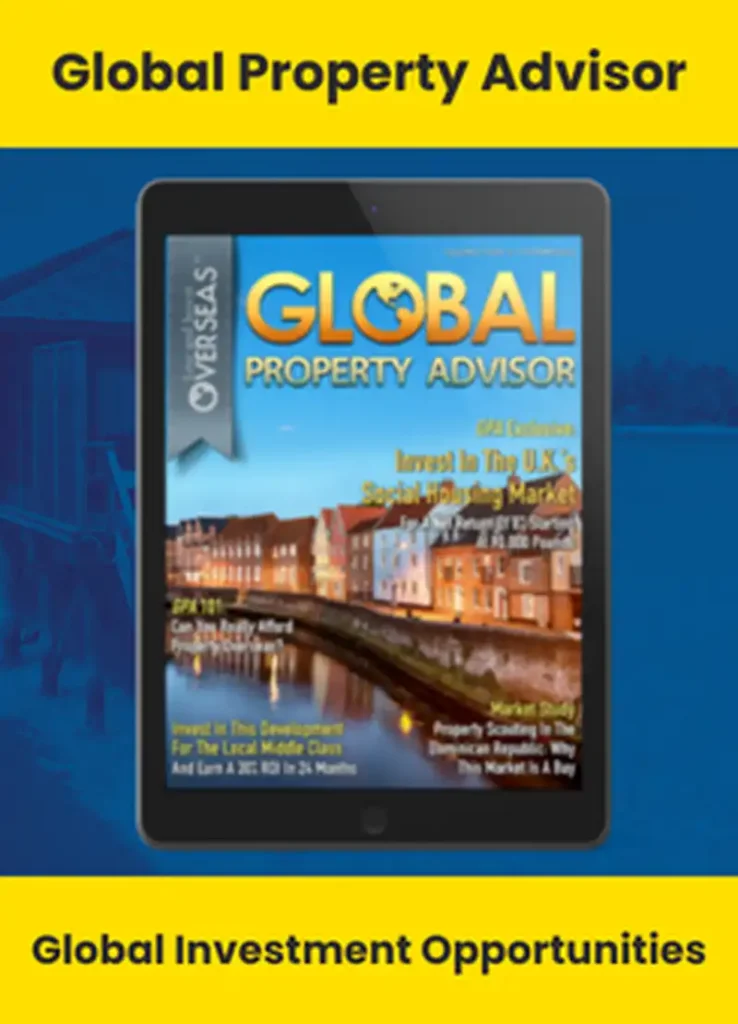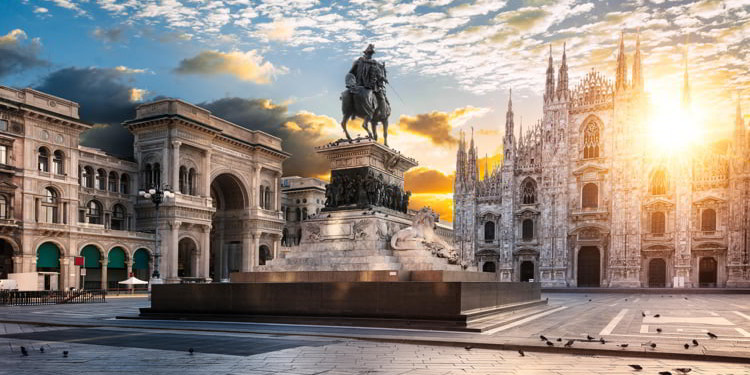Milan is a unique city in Europe… very unlike any other Old World destination.
It’s not as new and modern as Northern Europe… but it’s not as ancient or traditional as the rest of Western Europe…
The best comparison I can think to make is that it’s a perfect marriage of Paris and New York.
It’s got the hustle and bustle of New York—the likes of which is decidedly un-European. Milan is fast-paced, business-minded, international, and chaotic. It’s also jokingly said to be home to more foreigners than locals, much like Manhattan.
But it’s also got the beauty, the respect for culture and history, and the appreciation for fine things that Paris has. With centuries-old architecture, world-class works of art, and the decorum that’s typical of Europe, it seems to offer the best of both worlds.
Milan is a modern city
Modern by European standards, it’s true that much of the city was built after the devastation of WWII, but the historic architecture that remains is a delightful surprise you might find around any corner. And the architecture that sprang up in the post-war period isn’t the typical 60s- and 70s-era construction that you usually find in cities that had to reconstruct after the war. The majority of the modern construction in the city center takes its inspiration from classical and neoclassical styles.
Milan is home to soaring glass skyscrapers that defied engineering at the time of their construction…
And also to the Duomo, a gothic masterpiece that took nearly six centuries to complete.
It’s home to the tallest tower in Italy… and to Da Vinci’s Last Supper…
Milan is a comfortable home to both the uber-modern and to the centuries-old… nothing here seems out of place.
With such a blend of old and new, this city is perfect for those looking for modern conveniences in Europe, where they can often be lacking.
Capital of the Lombardy region, Milan is the wealthiest city in Italy. It’s home to the Italian stock exchange and is the financial and commercial capital of the country. It’s the third-largest economy in Europe, after Paris and Madrid.
With a population of 1.4 million in the city center and another 2 million or so in the suburbs, Milan is the second-most populous city in Italy (after Rome). It’s got the fourth largest urban area in the EU, even reaching into Switzerland.
With all the international finance and industry, Milan is full of expats, most of whom are working in the city. There are also lots of foreign students attending the city’s universities.
There’s a joke in Italy that no one is actually from Milan… not even the Italians that live there. The city is said to be home to over 200,000 foreign residents, and in 2020, studies showed that one in five residents was from elsewhere.
All that in mind, it shouldn’t be surprising that Milan’s population is multicultural and diverse. No matter who you are, you’re sure to find a group of folks to identify with.
It may be an industrial and economic hub in Europe, but the city is not just for business… it attracts tourists and pleasure seekers just as strongly, and caters to them with luxury hotels, lux shopping, and fine dining—it’s the fifth-most starred city in the world by Michelin Guide.
Shopping here is a delight, with countless shops offering anything you can think of. There are plenty of high-end stores that are worth window shopping in even if they’re out of budget, but also plenty of affordable options.
A compact, flat city with great public transport, this is a city where you wouldn’t need a car to live, and where you can get by comfortably on your own two feet (or wheels) for the majority of your needs.
It’s also highly accessible, the travel hub of Northern Italy with two international airports and the best rail connections in the country.
In every respect, Milan is as modern a city as it gets while retaining its historic luster.
With an app for everything, I’d say Milan is the most connected and automated city I’ve visited in Europe, where digital progress is often far behind that of North America. No matter what you need, you can get it delivered in Milan. And contactless payments are accepted ubiquitously here, which isn’t the case in smaller towns.
Despite receiving about 8 million visitors per year (pre-COVID), the city is not as touristed as Rome, Florence, or Venice and doesn’t have the same feeling of overcrowding as other Italian culture capitals.
Overall, there’s more of a feeling of permanence to Milan than I’ve ever experienced in the other big Italian cities, where so much seems like it exists for tourists alone. Not to detract from the others, but Milan feels more like a “real” city with a booming economy beyond tourism.
Most European cities are as old on the inside as they are on the outside—something that foreigners don’t often consider. Old can be charming… but it’s also inconvenient.
Milan, however, mostly bucks this trend, as much of its construction is relatively modern. Apartments here are new—they have level floors, the windows are insulated, they have elevators, the plumbing and electricity is all modern, and many boast amenities like central heating and air conditioning, remote-controlled blinds, and heated floors.
But this isn’t an inexpensive destination… if you’re looking to reduce your costs overseas, Milan probably isn’t the place for you. If, however, budget isn’t a concern for you, then Milan offers an exceptional lifestyle.
In fact, it’s been ranked as having the second-best quality of life in Italy. A playground for those who enjoy design, fashion, and art, this city is a treat for the senses in every aspect.
Who would enjoy a life in Milan?
Those with an eye for design, architecture, fashion, and art…
Those looking to do business in Italy…
Those looking to live without a car in their new life overseas…
Those who are romanced by the Old World but don’t want to compromise on modern conveniences…
In short, this is a destination for a city mouse looking for modern life in the Old World.
Sincerely,

Kat Kalashian
Editor, In Focus: Europe










